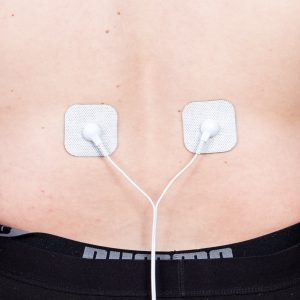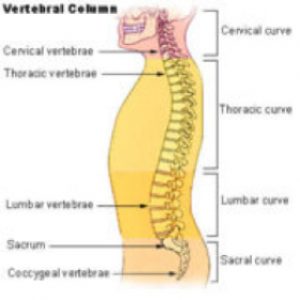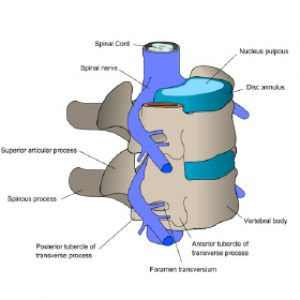
Back Pain
Back Conditions that may be treated:
- Arthritis of the back (also called degenerative joint disease or osteoarthritis or spondylosis)
- Sciatica
- Muscle strain in any area of the back
- Herniated disc
- Degenerative disc disease
Basic Treatment
Prior to treatment, acute low back pain may be begun with cold/ice and chronic low back pain with either cold or heat packs. Cold should be applied with a towel between the skin and the cold pack and should be on no longer than 15-20 minutes. The heat pack also needs toweling between the pack and the skin but can stay on up to 30 minutes. In both cases the skin should be checked afterward for any blisters or signs that the skin was damaged from the cold or heat.
- Refer to the reference photo for basic options of elbow pain placement of electrodes
- Clean the skin with a wet paper towel and water to remove dead skin and other surface debris
- Do not have any lotion on the skin as it may decrease conductivity and/or create a skin irritation
- Apply the electrodes as instructed in the basic treatment procedure to area of pain using the photos noted for placement suggestions
- Turn unit on and move the cursor to the general area that you want to treat
- Press the start button and the unit does all the work. It will go through 2 phases of different currents during the total time.


Degenerative arthritis, osteoarthritis and spondylosis are three of the names given to arthritis of the spine which is caused from years of bending and twisting and typically affects everyone as they age. However, many people do not ever have low back pain which is simply because their arthritic changes are not pressing on any nerves. Statistics show that 80% of the population of the world has back pain some time in their lives. When the wearing down occurs, the body attempts to stabilize itself by sending in calcium deposits which are randomly laid down in the area of the spinal vertebra. This can result in narrowing of the opening where the spinal nerves exit the spinal column between the vertebra and is called spinal stenosis.
Spinal Stenosis happens when spinal arthritis results in the narrowing and constricting of the spinal canal, often resulting in compressed nerves and pain. The spinal canal is where the spinal nerve comes through the vertebrae and courses down into the pelvis or leg. If the nerve becomes compressed at this point it can result in pain or numbness along the path of the nerve down into the pelvis or leg.
Sciatica occurs when the spinal stenosis affects the nerves that make up the large sciatic nerve coming off the lower vertebrae. This results in the common condition known as sciatica and can often be felt in the mid to lower buttocks on the affected side and can often be felt down the back of the leg and all the way to the foot.
The most common condition for everyone, especially younger people is a low back muscle strain. This is from putting too much stress on the low back muscles, usually from lifting with poor technique or from bending and lifting when muscles are not used to performing an activity. For example, if you are moving furniture and you are not used to this type of activity. The muscles become strained and react by going into a painful muscle spasm with swelling and inflammation.
If you have a full blown herniated disc it is something that needs to be addressed by a medical doctor immediately and is typically extremely painful and often needs surgery. What is much more common is a partial herniation of a disc which is where a portion of the disc (between the vertebras) pushes out into the spinal canal and pinches the nerve.
Case History
- PM, North Carolina—63 y/o female with persistent low back pain across the entire low back usually at a pain level 2-4 out of 10. However, occasionally the pain increases to a 9/10 which happened to be when she used the PAT device. After the first treatment, it reduced the pain to a more tolerable 5/10 and after the second treatment it was a 1/10. Following 10 treatments, she had virtually no pain and as of two weeks later, the pain has been barely noticeable.
